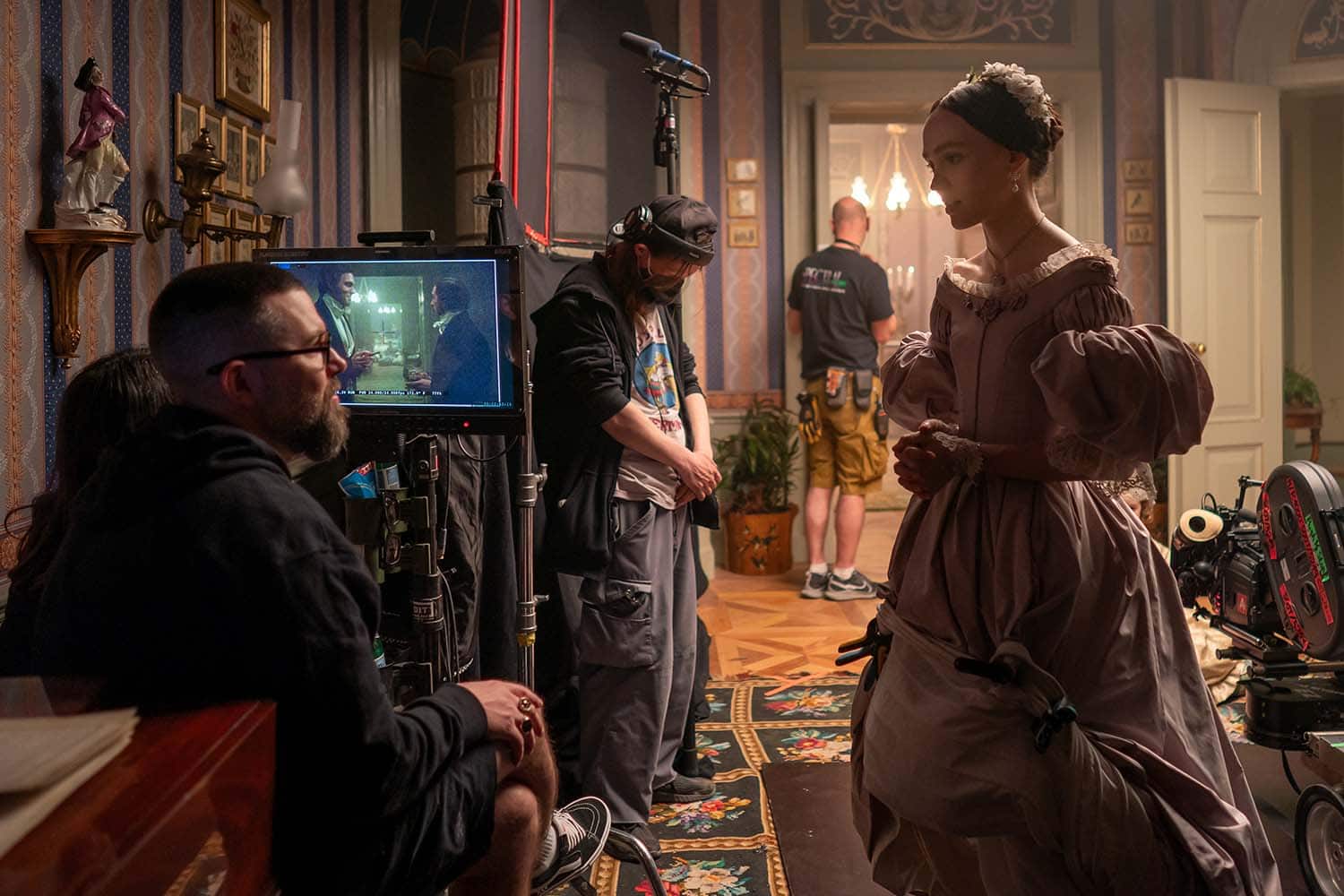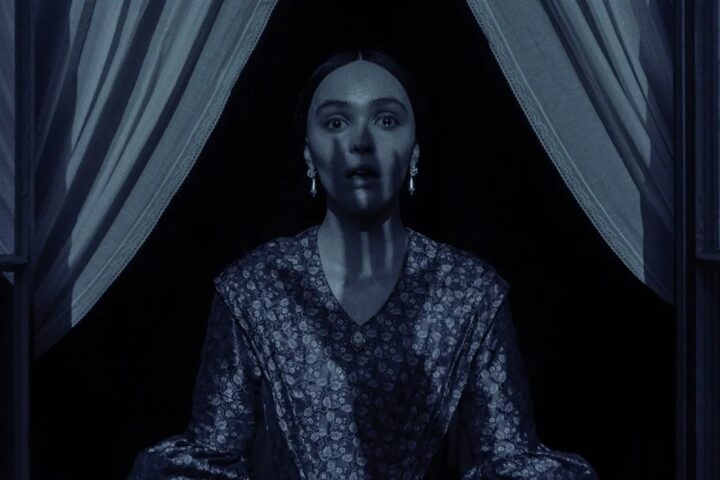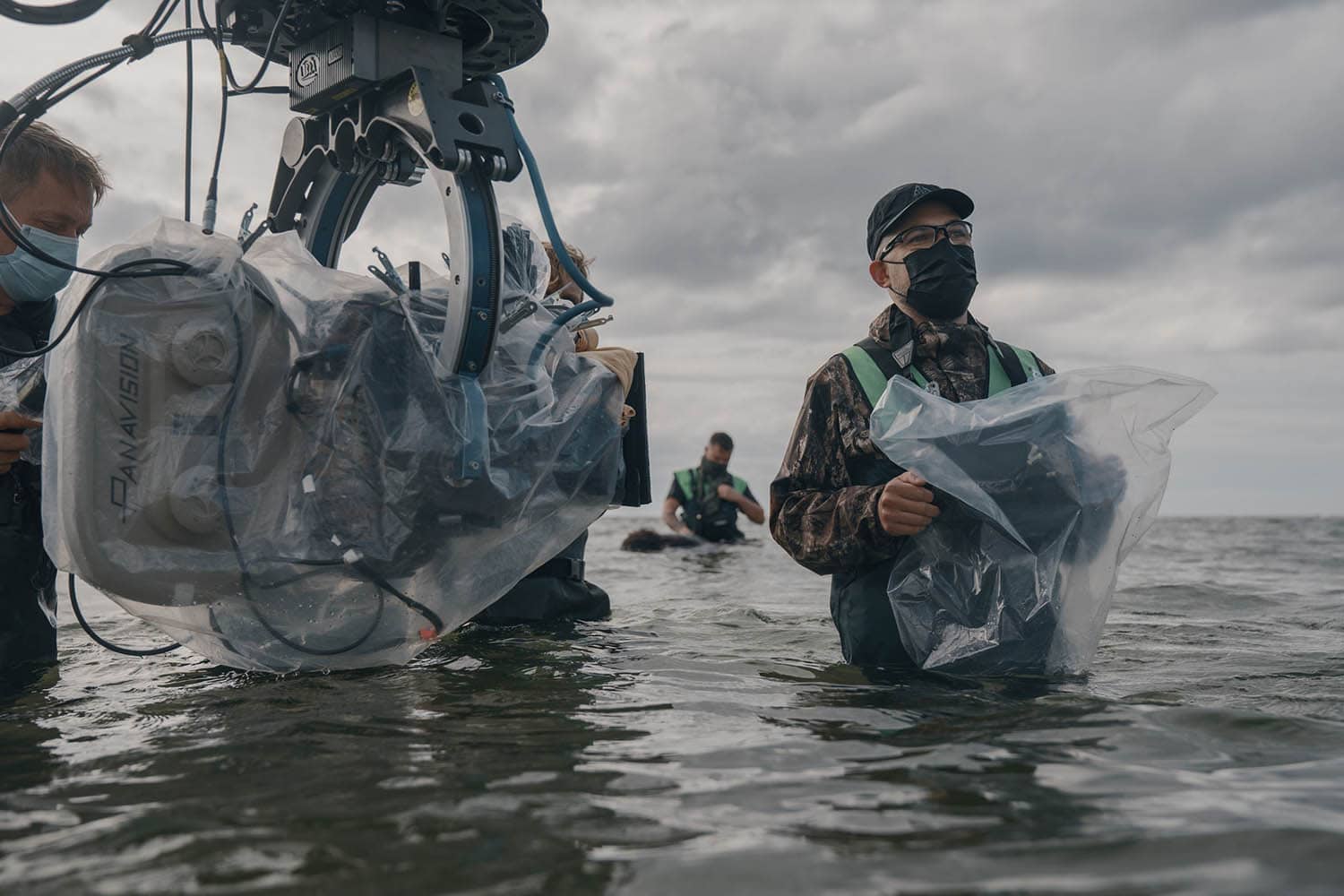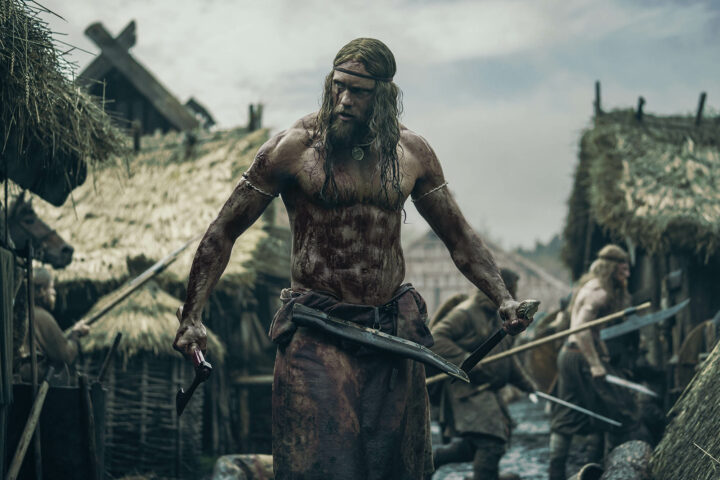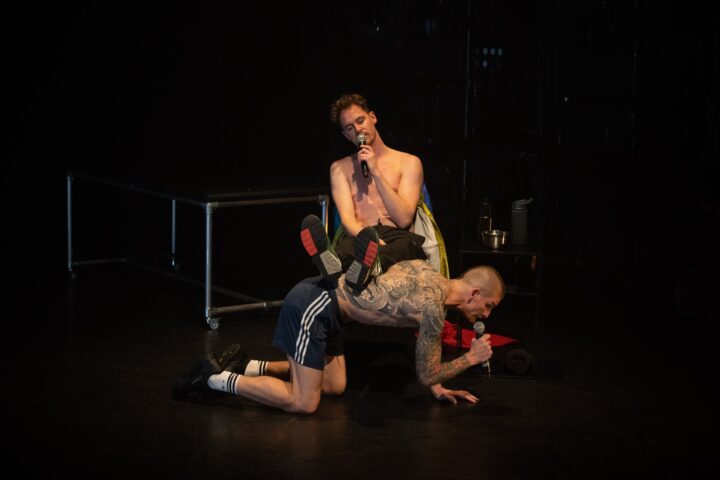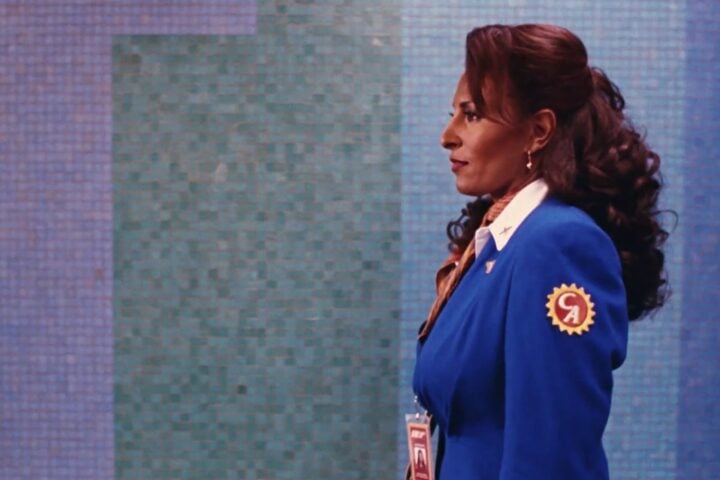It seems like every 10 years someone reinvents vampires for current times. But we now have a pattern of someone, roughly every 50 years, resurrecting F.W. Murnau’s Nosferatu, a rougher, meaner, uglier take on the Dracula mythos—and always in a way that has its mythmaking stuck in the past and the artistry of the storytelling very much of the present.
So, really, there was no one better to bring the abominable Count Orlok into the 21st century than Robert Eggers, who’s made a career of bringing old folklore screaming into the present. The Murnau film was always meant to be Dracula with the serial numbers filed off: A real estate broker goes to rural Eastern Europe, finds himself held captive by a bloodsucking force of evil beyond reckoning, until the creature fixates on the broker’s beautiful innocent of a wife, and brings all sorts of unholy terror to the countryside until she becomes his.
Eggers’s sensibilities, and the freedom afford by modern filmmaking, allow him to drill just a tiny bit deeper into the mythos. His Count Orlok (Bill Skarsgård) is an eldritch force of nature, and the innocent Ellen (Lily-Rose Depp) is a victim of her own mental illness and the ignorance of the community around her just as great a factor in her peril.
Shortly before Nosferatu’s VOD drop, I had the chance to speak with Eggers about the film, its origins, and how the story was received in its birthplace.
You’re coming off of The Northman, a film that I absolutely love but kind of bounced off the mainstream a bit. What was it about this film that made it hit the zeitgeist the way that it did?
Hard to say, but I think that The Northman is a bit more of a challenging movie, because in the structure of the saga, the central protagonist isn’t necessarily the most inviting. It’s more of a challenge to get into that, and while this is a different take on Nosferatu, it’s still a story people know, whether people know this or Dracula. It’s maybe easier to reinterpret, where people feel a little more at home with it. And also, quite frankly, because of that expectation of what it could bring, we had a super, duper, incredibly strong ad campaign, which certainly helps.
It’s interesting to hear you say that this film is more inviting, as Orlok is a seven-foot, sore-ridden vampire with stick-figure legs. How do you make a film where it’s still inviting and accessible even though this is one of your main characters?
Well, it’s Lily [Rose Depp]’s story. I think that this movie attempts to be more of a romp, [as] it has more humor. In the style of the Nordic storytelling, the music is more contained. This is a gothic romance, so the music [can be] scary as well as very romantic and more conventionally emotional. All these little things play a part in the tone of the movie. Honestly, I dunno. [laughs] You try to make the best movie you can. Sometimes it works, sometimes it doesn’t.
Don’t worry, Tumblr has plenty of theories. So, this was a film that was on your mind for a great many years. How did the story evolve from the first time you thought of it up until now? What were the big changes you wanted to make?
It hasn’t changed too much since I wrote the first decent draft. Mostly shaving exposition down, [finding out] how much money we’re gonna have for the boat sequence, should it be bigger, should it be smaller, do we get rid of it altogether, things like that. But I think when I knew that it was gonna be Ellen’s story, that she was gonna be the central protagonist, and I knew that Orlok was gonna be a folk vampire, and Von Franz—the Van Helsing character—was gonna be much more prominent than he is in the Murnau or Herzog versions, and the Harding family dynamics, their progression, I knew what the movie was. Then it was just about getting it right.
One of the things I did read that you did with that budget was that you went to Transylvania, actually did a lot of research on the original folklore. I live in Massachusetts, and Salem obvious has its whole history with witches and whatnot, but what’s Romania’s relationship with vampire mythology nowadays?
In general, Romanians aren’t into it. And also, I think, for a long time, Romanian folklorists weren’t willing to call strigoi—which is their word for vampires—vampires. They were saying that a vampire is an Anglo literary invention, and their strigoi was another thing altogether. Also, the conflation with Vlad the Impaler/Vlad Tepes [is] complicated. Even though he was cruel, he is, in some ways, a national hero. Aside from Mihai the Brave, he was one of the few rulers who united all of the Romanian states as one. So, they weren’t into it very much, but they know that it’s a good tourist attraction. But I think in the past 10 or 20 years, more folklorists are cool with calling strigoi vampires, [which includes] Florin Lazarescu, who’s Romanian screenwriter, poet, and novelist who worked with us on the Romanian dialect and creating the ancient language that Orlok uses for his magical spells, and general vampire lore.
In terms of trimming and cutting stuff down, what’s in the extended cut now out on digital that you wanted to not have in the theatrical cut?
I had total creative control, but I also had the studio with their opinions, and Chris Columbus, whose studio was super supportive, but after a lot of conversations, it felt like, shedding these things was probably best for getting the overall pacing of the film right in theaters, but at home, we could indulge in some stuff. Mainly, Willem Dafoe has a lot more exposition. There’s one Willem Dafoe scene that, in the end, I was very glad wasn’t in the theatrical version, but also pays homage to Hammer horror films, and a shot that Peter Cushing made famous in many movies. So, I’m glad that my fellow nerds can enjoy that.
So, having been steeped in vampire lore this long, is there a particular moment, scene, performance in the film that defines the whole vampire myth for you at this point, the one that made you want to make it to begin with?
Whew. Well, obviously, the Roma ritual, where they disinter the corpse is the most trad folklore [moment in the film], but I must say, when Thomas throws the lid off the coffin, and you first see Orlok looking like a corpse, I just think he looks so…beautiful. [laughs] It’s so great with the maggots and discoloration of the skin. I love how that turned out.
Lastly, anything you’ve been watching lately that you’d want to recommend?
It’s gotten a lot more attention of late, which I’m glad about, but The Girl with the Needle by Magnus von Horn is just a great movie. I really recommend it.
Since 2001, we've brought you uncompromising, candid takes on the world of film, music, television, video games, theater, and more. Independently owned and operated publications like Slant have been hit hard in recent years, but we’re committed to keeping our content free and accessible—meaning no paywalls or fees.
If you like what we do, please consider subscribing to our Patreon or making a donation.

